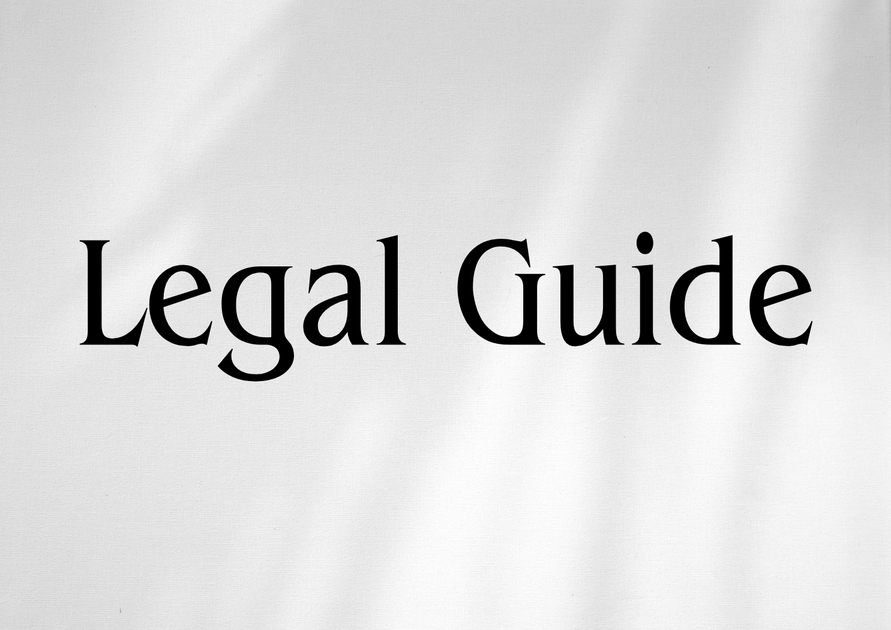Introduction
The rapid evolution of the Middle East’s financial sector is marked by robust regulatory reforms—none more pivotal than those shaping the legal structure of financial institutions in Saudi Arabia. For UAE businesses, legal practitioners, and executives eyeing cross-border ventures or strategic partnerships, a granular understanding of these regulatory frameworks has never been more critical. As Saudi Arabia advances toward Vision 2030, aiming to diversify its economy and enhance investor confidence, the regulatory climate is undergoing significant transformation. This article offers a professional legal analysis of Saudi Arabia’s financial institutions law, offering practical guidance and actionable insights for stakeholders in the UAE, especially in light of regulatory trends influenced by UAE Law 2025 updates and the latest federal decrees.
With deep commercial integration between the UAE and Saudi financial markets, understanding the nuances of Saudi regulatory requirements ensures not only legal compliance but strategic advantage. Given the similarity and divergence in regulatory models between Abu Dhabi, Dubai, and Riyadh, this analysis also provides vital comparative perspectives tailored for UAE-centric operations.
Table of Contents
- Legal Overview: Key Regulatory Bodies and Laws
- Institutional Framework of Saudi Financial Sector
- Licensing and Registration Provisions
- Corporate Governance and Risk Management
- Compliance, Enforcement, and Penalties
- Comparative Analysis with UAE Regulations
- Practical Insights and Strategic Recommendations
- Case Studies and Hypothetical Examples
- Conclusion and Forward-Looking Strategies
Legal Overview: Key Regulatory Bodies and Laws
Saudi Central Bank and Capital Market Authority
At the core of Saudi Arabia’s financial regulatory landscape are two principal authorities: the Saudi Central Bank (SAMA) and the Capital Market Authority (CMA). SAMA regulates banking, financing companies, and insurance entities, while CMA governs capital markets, including securities, investment funds, and brokerage activities.
Principal Statutes Regulating Financial Institutions
Legal oversight is underpinned by several foundational statutes, notably:
- Banking Control Law (Royal Decree No. M/5 of 1966): Provides the regulatory framework for banks, including licensing, supervision, and prudential requirements.
- Finance Companies Control Law (Royal Decree No. M/51 of 2012): Governs non-bank financing institutions, consumer finance, leasing, and mortgage finance companies.
- Capital Market Law (Royal Decree No. M/30 of 2003): Lays out the foundations for capital market activities, securities offerings, and the mandates of the CMA.
- Insurance Control Law (Royal Decree No. M/32 of 2003): Regulates the insurance sector, including licensing and compliance requirements.
- Companies Law (Royal Decree No. M/3 of 1437H): Governs the incorporation, management, and dissolution of companies across sectors, including financial institutions.
These regulations are periodically updated to reflect economic priorities and international best practices. Businesses must keep abreast of new circulars, SAMA directives, and CMA guidelines—paralleling regulatory updates in the UAE such as the Federal Decree-Law No. 32 of 2021 on Commercial Companies and the UAE 2025 compliance roadmap.
Institutional Framework of Saudi Financial Sector
Categories of Regulated Financial Institutions
Saudi Arabia’s financial sector encompasses several categories:
- Commercial Banks: Including both local and foreign branches.
- Investment Banks & Brokerages: Authorised by the CMA to engage in capital market activities.
- Finance Companies: Consumer and mortgage lenders, leasing firms, and micro-finance providers.
- Insurance and Reinsurance Firms: Regulated by SAMA with a focus on robust actuarial and solvency standards.
- Financial Technology (FinTech) Companies: With specific licensing provisions introduced by SAMA’s Regulatory Sandbox and recent FinTech regulations.
Ownership and Capital Requirements
Notably, regulatory reforms have relaxed foreign ownership norms in select financial subsectors, a move that closely mirrors strategies in the Dubai International Financial Centre (DIFC) and Abu Dhabi Global Market (ADGM). Nevertheless, capital requirements and fit-and-proper tests for directors remain rigorous, with significant vetting by SAMA and the CMA.
Visual Suggestion
Suggested Visual: A process flow diagram outlining the licensing application stages with SAMA and CMA, from initial application, through due diligence, to final approval.
Licensing and Registration Provisions
Licensing Requirements
Operating as a financial institution in Saudi Arabia, whether as a bank, finance company, or insurance provider, mandates a formal licence from the relevant authority. Key licensing requirements include:
- Capital Adequacy: Minimum paid-up capital thresholds vary by segment. For instance, commercial banks commonly require SAR 10 billion, while finance companies and insurance firms have sector-specific minimums.
- Ownership Disclosure: Full transparency regarding ultimate beneficial ownership (UBO) and shareholders; critical for anti-money laundering (AML) compliance.
- Fit and Proper Assessments: Due diligence on board members and senior management to assess integrity, experience, and financial soundness.
- Business Plan: Submission of a detailed business plan demonstrating operational feasibility, risk management systems, and compliance readiness.
- Islamic Finance Compliance: For Shariah-compliant institutions, mandatory oversight by qualified Shariah Boards and compliance officers.
Practical Implications for UAE Businesses
UAE companies seeking market entry—directly or via subsidiaries—must align with these requirements early in the transaction lifecycle. Legal due diligence on partner alignment, cross-border financing restrictions, and the need for robust AML controls are essential, especially in light of comparable UAE requirements under the Federal Decree-Law No. 20 of 2018 on Anti-Money Laundering and Combating the Financing of Terrorism.
Licensing Regime: Old vs. New (Table)
| Aspect | Pre-2019 Regime | Current Regime |
|---|---|---|
| Foreign Ownership | Restricted to minority stakes, exceptions rare | Permitted up to 100% in select subsectors |
| Capital Requirements | Lower nominal thresholds | Higher robust minimums; frequent recalibration |
| Central Bank Vetting | Modest due diligence | Stringent, multi-stage fit and proper tests |
| Islamic Window Operations | Limited provisions | Dedicated guidelines; enhanced Shariah board monitoring |
| Tech/Fintech Licensing | No specific regime | Dedicated SAMA Sandbox, new licensing categories |
Corporate Governance and Risk Management
Corporate Governance Standards
Inspired by international benchmarks and reinforced by SAMA’s Corporate Governance Guidelines, financial institutions in Saudi Arabia are required to establish rigorous governance frameworks. Key elements include:
- Board Composition and Independence: Minimum independent directors and separation of chairmanship and executive roles.
- Risk Committees: Mandatory independent audit and risk committees.
- Internal Controls: Robust internal audit, compliance, and whistleblowing channels.
- Disclosure Obligations: Regular public reporting of financial statements, risk exposures, and related-party transactions.
Comparison with UAE Corporate Governance (Table)
| Governance Dimension | Saudi Arabia (SAMA/CMA) | UAE (Central Bank/ESCA/DIFC) |
|---|---|---|
| Board Composition | At least 1/3 independent directors | Similar; 1/3 for PJSCs, 1/2 for some sectors |
| Audit/Risk Committees | Mandatory, chaired by independent | Mandatory, detailed DIFC guidance |
| Shariah Governance | Mandated for Islamic banks/finance | Centralized Shariah Board (CBUAE); local boards |
| Public Disclosure | Quarterly, as per CMA Listing Rules | Quarterly for listed; annual for others |
| Whistleblower Protection | Progressive but less prescriptive | Increasing focus in latest reforms |
Visual Suggestion
Suggested Visual: A compliance checklist for board and management obligations in Saudi Arabia versus UAE (table or infographic format).
Compliance, Enforcement, and Penalties
Compliance Obligations
Financial institutions face stringent compliance requirements spanning prudential standards, anti-money laundering (AML), counter-terrorist financing (CTF), data protection, and consumer protection. These are enforced through regular SAMA inspections and CMA audits, with a proactive regime of self-reporting for significant breaches.
- AML/CTF: SAMA’s Regulations for Anti-Money Laundering and Terrorism Financing (last updated 2021) parallel the UAE’s compliance frameworks under Federal Decree-Law No. 20 of 2018.
- Data Protection: While Saudi Arabia’s Personal Data Protection Law (PDPL) came into effect in 2023, the implementation is being closely monitored. Practices should reflect consent management, data localisation, and breach notification protocols.
- Consumer Protection: Enhanced disclosure, fair lending, and complaint handling policies are mandatory.
Enforcement and Penalties
Both SAMA and CMA possess broad enforcement powers. Sanctions against non-compliant financial institutions are severe, ranging from fines and public censure to licence suspension and criminal prosecution for wilful misconduct. The most recent enforcement trends show an increase in administrative penalties for deficient AML frameworks and unauthorised capital market activities.
Table: Penalties for Non-Compliance (Comparative)
| Type of Breach | Saudi Arabia (SAMA/CMA) | UAE (CBUAE/ESCA) |
|---|---|---|
| AML/CTF Violations | Fine up to SAR 50 million, licence revocation, prosecution | Fine up to AED 50 million, temporary/permanent ban, prosecution |
| Unlicensed Activity | Cease and desist order, criminal charges | Severe monetary fines, criminal referral |
| Data Protection Failure | Fines, government access restrictions | Fines up to AED 5 million, operational suspension |
| Consumer Protection Lapses | Administrative sanctions, compensation order | Enforceable undertakings, financial penalties |
Compliance Strategies
Institutions are advised to establish a comprehensive compliance function, including regular staff training, internal monitoring, and independent auditing. Cross-jurisdictional groups particularly benefit from harmonised policies that reflect the highest local regulatory benchmark between Saudi and UAE frameworks.
Comparative Analysis with UAE Regulations
Legal Structure: Similarities and Divergences
While Saudi Arabia and the UAE share a pro-business regulatory ethos and increasingly flexible foreign investment norms, notable differences remain in supervisory approaches, licensing procedures, and sectoral focus. An appreciation of these differences is vital for regional operators and legal consultants.
- Supervisory Model: Both countries operate robust central banks; however, the scope of the UAE’s financial free zones (DIFC, ADGM) introduces additional regulatory layers that are absent in Saudi Arabia.
- Islamic Finance: Both nations offer strong Islamic finance regimes, yet the UAE boasts more mature Sukuk markets and a centralised Shariah board within the Central Bank.
- Data Regulation: Saudi Arabia’s PDPL is comparable to the UAE’s recent Federal Decree-Law No. 45 of 2021 on Personal Data Protection, yet practical application and enforcement are evolving in both jurisdictions.
Opportunities and Risks for UAE Businesses
Key opportunities for UAE businesses include access to one of the MENA region’s largest consumer bases and alignment with Vision 2030 investment projects. Risks include the complexity of local content requirements, ongoing regulatory changes, and potential exposure to compliance investigations in both markets.
Practical Insights and Strategic Recommendations
- Proactively map Saudi licensing and compliance requirements before market entry; perform legal gap analysis relative to UAE compliance standards.
- Leverage synergies arising from dual compliance, especially for cross-border FinTech and capital market ventures.
- Regularly monitor official updates from SAMA, CMA, and the UAE’s Ministry of Justice for regulatory revisions and enforcement trends.
- Engage local legal and regulatory advisors, especially when structuring joint ventures or navigating Shariah governance complexities.
- Integrate technology and RegTech solutions (e.g., automated monitoring, reporting tools) to streamline cross-jurisdictional compliance obligations.
Visual Suggestion
Suggested Visual: Compliance action plan diagram showing stages: initial risk assessment, legal gap analysis, cross-checking Saudi/UAE requirements, compliance training, and periodic audits.
Case Studies and Hypothetical Examples
Case Study 1: UAE-Based Bank Seeking Saudi License
Scenario: A Dubai-based bank intends to establish a full-service branch in Riyadh. Its initial application is delayed due to insufficient Shariah board documentation and a lack of granular UBO disclosures.
Legal Analysis: The delay highlights the need for comprehensive transparency in governance, full alignment with SAMA’s Shariah standards, and robust AML controls exceeding minimum disclosure thresholds.
Case Study 2: FinTech Expansion
Scenario: A UAE FinTech operator launches digital onboarding for Saudi consumer finance under a SAMA Sandbox licence. Within months, a cyber-breach underlines vulnerabilities in consent management protocols.
Legal Analysis: The case demonstrates the importance of embedding privacy-by-design principles and regular cybersecurity audits to meet obligations under both Saudi PDPL and the UAE Data Protection Law.
Case Study 3: Regulatory Enforcement
Scenario: A Gulf-based insurance consortium faces simultaneous investigations by SAMA and the UAE Central Bank for cross-border policy lapses and client disclosures.
Legal Analysis: Dual-enforcement risk underscores the necessity of coordinated compliance teams, unified documentation, and a clear protocol for regulatory engagement across jurisdictions.
Conclusion and Forward-Looking Strategies
Saudi Arabia’s evolving legal structure for financial institutions presents both opportunity and complexity for UAE businesses and advisors. With regulatory reforms gathering pace in tandem with UAE Law 2025 updates, organisations must take a proactive, integrated approach to compliance, governance, and risk management. Vigilance in monitoring legal changes—such as those promulgated by SAMA, the CMA, and the UAE Federal Legal Gazette—is essential for sustained success.
The regulatory environment is expected to become more harmonised across the GCC, supporting greater capital flows, innovation, and investor protection. To position for growth and resilience, UAE businesses are advised to:
- Maintain a rigorous, multi-jurisdictional compliance framework adaptable to new legal reforms.
- Invest in legal intelligence and ongoing training for senior executives and compliance teams.
- Foster open channels with regulators, maintain transparent documentation, and leverage technology for real-time monitoring.
By adhering to best practices and remaining agile, UAE stakeholders can advance their strategic interests in Saudi Arabia with confidence.



